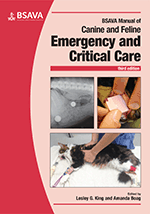
Full text loading...

It is essential that patients in respiratory distress are recognized immediately. Respiratory distress is caused by hypoxaemia, hypercapnia, or a significant increase in the work of breathing. This chapter covers diagnosis, emergency stabilization, approach to undiagnosed respiratory distress, pulmonary function testing in the dyspnoeic patient and intubation and positive pressure ventilation.
General approach to respiratory distress, Page 1 of 1
< Previous page | Next page > /docserver/preview/fulltext/10.22233/9781910443262/9781910443262.7-1.gif

Full text loading...

























